Histone deacetylase inhibitors restore toxic BH3 domain protein expression in anoikis-resistant mammary and brain cancer stem cells, thereby enhancing the response to anti-ERBB1/ERBB2 therapy
- PMID: 24025251
- PMCID: PMC3926895
- DOI: 10.4161/cbt.26234
Histone deacetylase inhibitors restore toxic BH3 domain protein expression in anoikis-resistant mammary and brain cancer stem cells, thereby enhancing the response to anti-ERBB1/ERBB2 therapy
Abstract
The present studies focused on defining the mechanisms by which anoikis-resistant (AR) mammary carcinoma cells can be reverted to a therapy-sensitive phenotype. AR mammary carcinoma cells had reduced expression of the toxic BH3 domain proteins BAX, BAK, NOXA, and PUMA. In AR cells expression of the protective BCL-2 family proteins BCL-XL and MCL-1 was increased. AR cells were resistant to cell killing by multiple anti-tumor cell therapies, including ERBB1/2 inhibitor + MCL-1 inhibitor treatment, and had a reduced autophagic flux response to these therapies, despite similarly exhibiting increased levels of LC3II processing. Knockdown of MCL-1 and BCL-XL caused necro-apoptosis in AR cells to a greater extent than in parental cells. Pre-treatment of anoikis-resistant cells with histone deacetylase inhibitors (HDACIs) for 24 h increased the levels of toxic BH3 domain proteins, reduced MCL-1 levels, and restored/re-sensitized the cell death response of AR tumor cells to multiple toxic therapies. In vivo, pre-treatment of AR breast tumors in the brain with valproate restored the chemo-sensitivity of the tumors and prolonged animal survival. These data argue that one mechanism to enhance the anti-tumor effect of chemotherapy could be HDACI pre-treatment.
Keywords: BAK; BH3 domain; ERBB1; MCL-1; NOXA; anoikis; autophagy; necrosis; signaling; tumor.
Figures

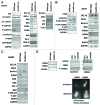
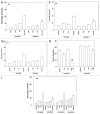
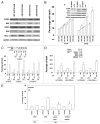

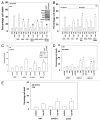

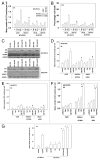
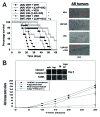
Similar articles
-
Inhibition of MCL-1 in breast cancer cells promotes cell death in vitro and in vivo.Cancer Biol Ther. 2010 Nov 1;10(9):903-17. doi: 10.4161/cbt.10.9.13273. Epub 2010 Nov 1. Cancer Biol Ther. 2010. PMID: 20855960 Free PMC article.
-
Myeloid cell leukemia-1 is an important apoptotic survival factor in triple-negative breast cancer.Cell Death Differ. 2015 Dec;22(12):2098-106. doi: 10.1038/cdd.2015.73. Epub 2015 Jun 5. Cell Death Differ. 2015. PMID: 26045046 Free PMC article.
-
Dual inhibition of Bcl-2 and Bcl-xL strikingly enhances PI3K inhibition-induced apoptosis in human myeloid leukemia cells through a GSK3- and Bim-dependent mechanism.Cancer Res. 2013 Feb 15;73(4):1340-51. doi: 10.1158/0008-5472.CAN-12-1365. Epub 2012 Dec 12. Cancer Res. 2013. PMID: 23243017 Free PMC article.
-
BCL-2 family deregulation in colorectal cancer: potential for BH3 mimetics in therapy.Apoptosis. 2020 Jun;25(5-6):305-320. doi: 10.1007/s10495-020-01601-9. Apoptosis. 2020. PMID: 32335811 Free PMC article. Review.
-
What can we learn from mice lacking pro-survival BCL-2 proteins to advance BH3 mimetic drugs for cancer therapy?Cell Death Differ. 2022 Jun;29(6):1079-1093. doi: 10.1038/s41418-022-00987-0. Epub 2022 Apr 6. Cell Death Differ. 2022. PMID: 35388168 Free PMC article. Review.
Cited by
-
Lapatinib resistance in HER2+ cancers: latest findings and new concepts on molecular mechanisms.Tumour Biol. 2016 Oct 10. doi: 10.1007/s13277-016-5467-2. Online ahead of print. Tumour Biol. 2016. PMID: 27726101 Review.
-
Regulation of OSU-03012 toxicity by ER stress proteins and ER stress-inducing drugs.Mol Cancer Ther. 2014 Oct;13(10):2384-98. doi: 10.1158/1535-7163.MCT-14-0172. Epub 2014 Aug 7. Mol Cancer Ther. 2014. PMID: 25103559 Free PMC article.
-
PDE5 inhibitors enhance celecoxib killing in multiple tumor types.J Cell Physiol. 2015 May;230(5):1115-27. doi: 10.1002/jcp.24843. J Cell Physiol. 2015. PMID: 25303541 Free PMC article.
-
Ionophores: Potential Use as Anticancer Drugs and Chemosensitizers.Cancers (Basel). 2018 Sep 27;10(10):360. doi: 10.3390/cancers10100360. Cancers (Basel). 2018. PMID: 30262730 Free PMC article. Review.
-
MtDNA depleted PC3 cells exhibit Warburg effect and cancer stem cell features.Oncotarget. 2016 Jun 28;7(26):40297-40313. doi: 10.18632/oncotarget.9610. Oncotarget. 2016. PMID: 27248169 Free PMC article.
References
-
- Schmelzle T, Mailleux AA, Overholtzer M, Carroll JS, Solimini NL, Lightcap ES, Veiby OP, Brugge JS. Functional role and oncogene-regulated expression of the BH3-only factor Bmf in mammary epithelial anoikis and morphogenesis. Proc Natl Acad Sci U S A. 2007;104:3787–92. doi: 10.1073/pnas.0700115104. - DOI - PMC - PubMed
Publication types
MeSH terms
Substances
Grants and funding
LinkOut - more resources
Full Text Sources
Other Literature Sources
Research Materials
Miscellaneous
